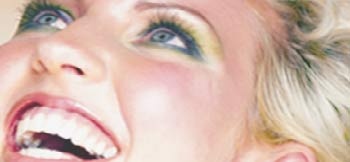 | |
|
Laugh Track
Q: WHY don't sharks bite lawyers? A: Professional courtesy!
That's just one of many jokes York psychology Professor Vinod Goel and research partner Raymond Dolan (Institute of Neurology, London, UK) used to tickle their subjects' grey matter. Other jokes included "phonological humour" (aka puns) like: Why did the golfer wear two sets of pants? He got a hole in one!
Their research wasn't just for laughs however. They wanted to find the neural correlations associated with the pleasurable effects of 'getting' a joke. To do that Goel and Dolan scanned the brains of 14 volunteers using a magnetic resonance imaging scanner (MRI), told them jokes, then measured the results. Guffawing was discouraged - to prevent movement of the scanner. They found that semantic jokes, like the one about the lawyer, were processed by areas of the brain known to be involved in processing language, whereas phonological jokes were processed by the areas of the brain involved in speech production.
The most significant finding was that both types of jokes activated an area of the brain known to represent and control reward-related behaviours (the medial ventral prefontal cortex). Activity in this region also correlated with subjects' ratings of the "degree of funniness" of the jokes.
"We were interested in the lateral thinking shift that takes place when the brain processes humour," explains Goel. The shift occurs when the set-up line of a joke focuses you in one direction then the punch line snaps you in another. "Our research showed the functional anatomy of these shifts is different from what was previously thought."
Goel says their discovery contributes to understanding of brain organization and function and has long-term implications for patient care. Findings were published in the March 2001 issue of Nature Neuroscience
Photo: Horst Hreget |
|
[ Home | Past Issues | Subscriptions | Contact Us | Site Map | Search Profiles ]
